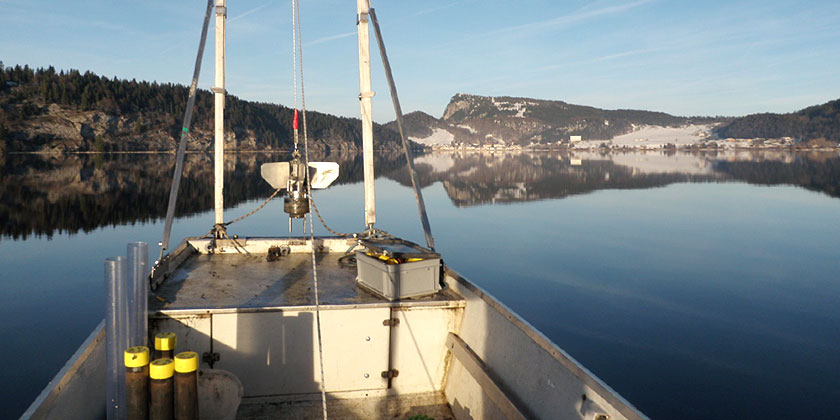Department Surface Waters - Research and Management
PALEOFARM: Paleolimnological tracers of early farming

During the last millennia, humans have modified almost half of Earth Surface. Deforestation, the beginning of agriculture and pastoral activities dramatically increased soil erosion.
The PALEOFARM project will investigate how soils were impacted by the rise of farming and the subsequent evolution of land-use. We will analyze sediment cores from three lakes with distinct histories of human activities in their catchment. We will use the soil residence time of biomarkers (fossil molecules) to determine which farming activity had the strongest impact. Compound-specific radiocarbon dating will be the key approach in this project.
Murtensee (Swiss lowlands) will serve as an example of the usual agricultural intensification with time. In Lake Lavijärvi in Ladoga Karelia (Russland), we will investigate the effects of a shift from intense agriculture to pasture. Finally, Lake Timerliit (Greenland) will provide us with clues on the recovery rates following cessation of human disturbance. Greenland saw the development of farming activity with the arrival of the Norse (Vikings) in the 10th century. As these settlements were abandoned in the 15th century, the landscapes returned to almost natural conditions.
